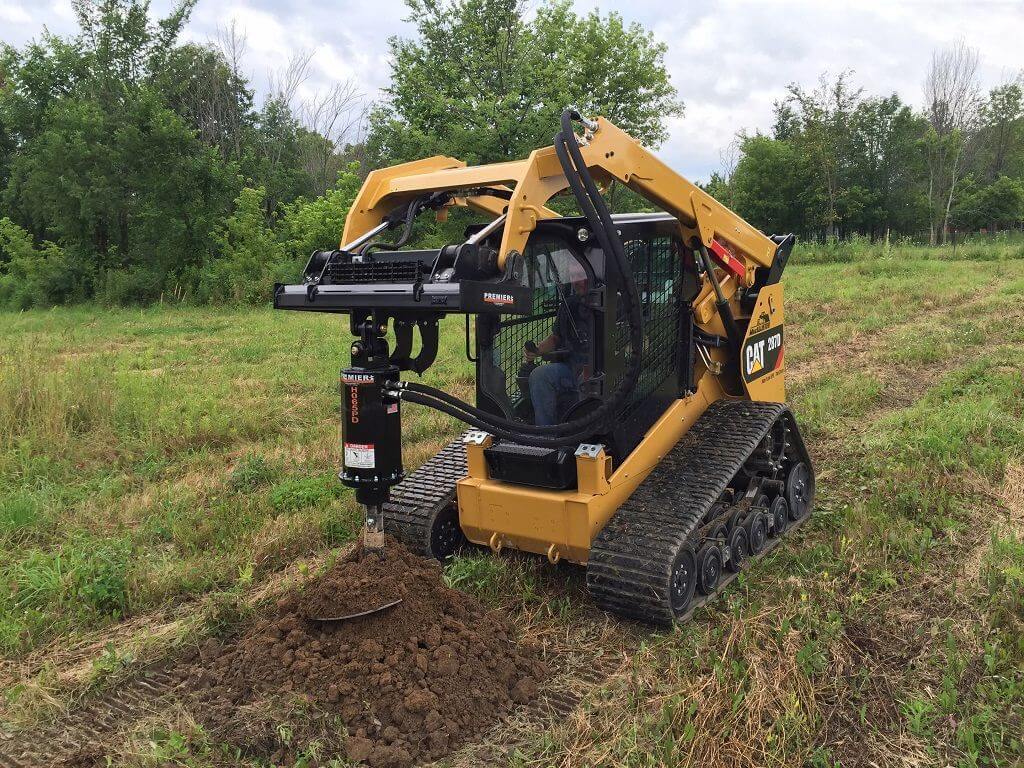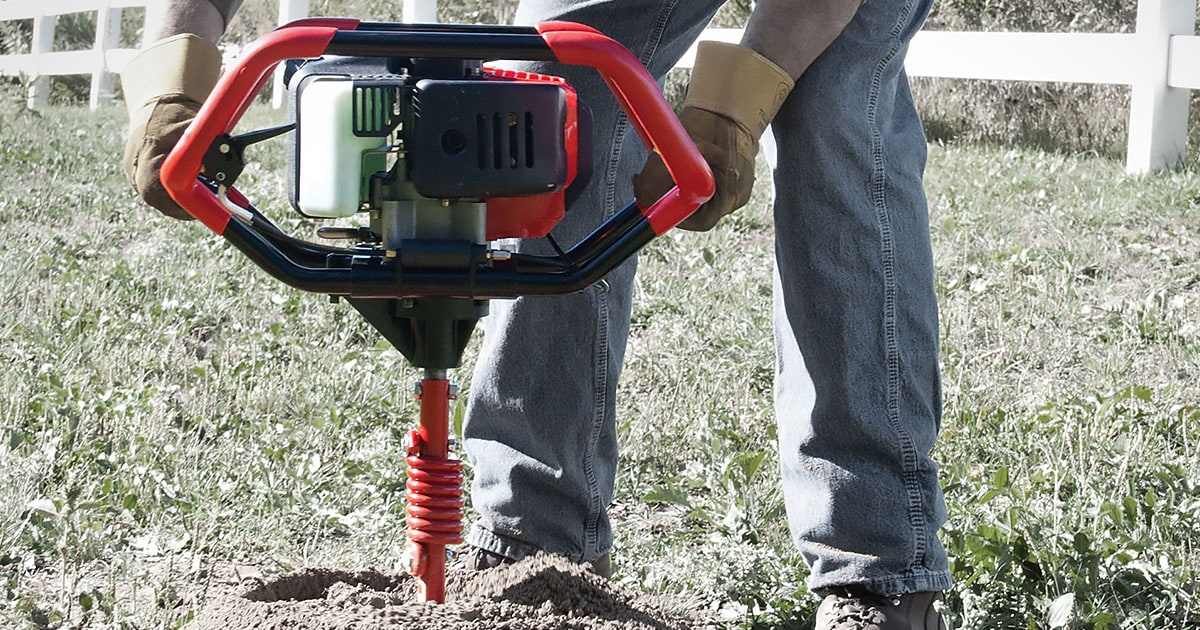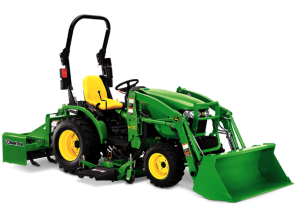Contents
- 1. Overview of Hydraulic Post Hole Digger
- 2. Types of Hydraulic Post Hole Diggers
- 3. Components of a Hydraulic Post Hole Digger
- 4. Choosing the Right Hydraulic Post Hole Digger
- 5. Installing and Operating a Hydraulic Post Hole Digger
- 6. Safety Considerations and Precautions
- 7. Troubleshooting and Maintenance Tips
- 8. Tips for Efficient Post Hole Digging
- 9. Frequently Asked Questions (FAQs)
- 10. Conclusion
If you’re in need of a reliable and efficient solution for digging post holes, look no further than the Hydraulic Post Hole Digger: Ultimate Guide. Whether you’re a professional contractor or a do-it-yourself enthusiast, this versatile tool is designed to make your digging tasks a breeze. With its hydraulic system and compatibility with tractor front-end loaders, you can expect superior digging power and precision. In this ultimate guide, we’ll explore everything you need to know about this essential tool, from its features and benefits to tips on how to use it effectively. Get ready to dig with ease and confidence!
1. Overview of Hydraulic Post Hole Digger
A hydraulic post hole digger is a powerful and efficient tool used for digging holes in various applications. It utilizes hydraulic power to operate and can be attached to a tractor or backhoe for optimal performance. In this comprehensive guide, we will explore the different types, components, advantages, and considerations for choosing the right hydraulic post hole digger. We will also discuss installation, operation, safety precautions, troubleshooting, maintenance tips, and provide answers to frequently asked questions.
1.1 What is a Hydraulic Post Hole Digger?
A hydraulic post hole digger is a specialized equipment designed to excavate holes quickly and efficiently. It consists of several components such as a hydraulic power source, gearbox or drive unit, auger or digging tool, mounting brackets, controls, and safety features. By utilizing hydraulic power, the digger can generate high torque, enabling it to penetrate various types of ground, including compacted soil and rocky terrain.
1.2 Applications of Hydraulic Post Hole Diggers
Hydraulic post hole diggers have a wide range of applications across various industries. They are commonly used in agriculture for fence installation, tree planting, and landscaping projects. In construction, these diggers are utilized for foundation digging, installing signposts, and erecting poles. They are also popular in the telecommunications industry for digging holes for utility pole placement. With their versatility and efficiency, hydraulic post hole diggers are a valuable tool in many outdoor projects.
1.3 Advantages of Hydraulic Post Hole Diggers
Hydraulic post hole diggers offer several advantages over traditional manual or mechanical diggers. First and foremost, they provide significantly more power and torque, allowing for faster and easier digging, even in tough soil conditions. The hydraulic system also offers precise control, enabling operators to adjust the digging depth and position accurately. Additionally, hydraulic post hole diggers are highly durable and designed to withstand heavy-duty use. The ability to attach these diggers to tractors or backhoes enhances their versatility and ensures compatibility with existing equipment.
2. Types of Hydraulic Post Hole Diggers
There are different types of hydraulic post hole diggers available, each with its own unique features and applications. Understanding the variations will help you choose the most suitable digger for your specific needs.
2.1 Auger Drive Hydraulic Post Hole Digger
An auger drive hydraulic post hole digger is a standalone unit that can be attached to a tractor’s three-point hitch or a skid steer loader. It is designed to provide increased flexibility, as it can be easily connected and disconnected, allowing for quick interchangeability between other attachments. Auger drive diggers are known for their efficiency in digging holes for fencing, landscaping, and other similar projects.
2.2 Auger Attachment Hydraulic Post Hole Digger
An auger attachment hydraulic post hole digger is specifically designed to be attached to the front end of a loader tractor, making it ideal for digging holes in tight or hard-to-reach areas. This type of digger utilizes the tractor’s hydraulic system for power, simplifying the setup process and eliminating the need for additional power sources. Auger attachment diggers are commonly used in construction and utility projects.
2.3 Backhoes with Hydraulic Post Hole Digger Capability
Backhoes with hydraulic post hole digger capability combine the functionalities of a backhoe and a post hole digger in a single machine. These versatile diggers are typically used in larger-scale construction projects that require both excavation and hole digging capabilities. With their extended reach and enhanced digging power, backhoes with hydraulic post hole digger capability provide an all-in-one solution for various digging needs.
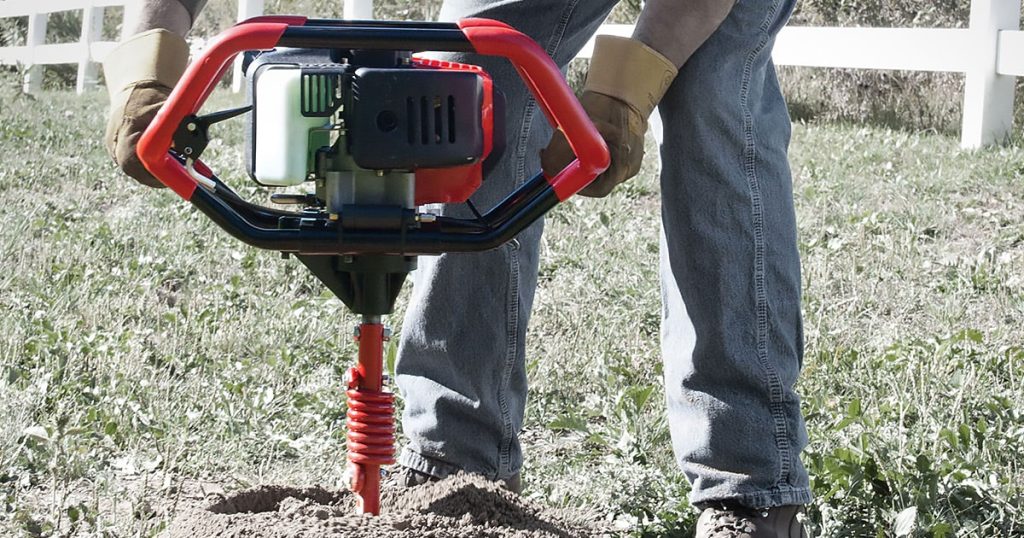
3. Components of a Hydraulic Post Hole Digger
Understanding the key components of a hydraulic post hole digger is crucial in order to fully grasp its functionality and optimize its performance.
3.1 Hydraulic Power Source
The hydraulic power source, typically a hydraulic motor or pump, provides the necessary power and torque to drive the auger and dig the hole. This component is essential for the efficient operation of the digger.
3.2 Gearbox or Drive Unit
The gearbox or drive unit is responsible for transferring power from the hydraulic power source to the auger. It ensures smooth and consistent rotation of the auger while maintaining optimal torque.
3.3 Auger or Digging Tool
The auger or digging tool is the main component that physically excavates the hole. It is available in various sizes and designs to suit different hole diameter requirements. Augers can be made of durable materials such as steel or carbide for increased longevity and performance.
3.4 Mounting Brackets
Mounting brackets are used to securely attach the hydraulic post hole digger to the tractor, backhoe, or loader. These brackets vary in design and compatibility, so it is essential to ensure proper fitting and stability during attachment.
3.5 Controls and Safety Features
Controls and safety features include levers, switches, and mechanisms that allow the operator to control the digger’s functions. These features ensure safe and efficient operation by enabling precise control of digging depth, auger rotation, and emergency shut-off in case of potential hazards.
4. Choosing the Right Hydraulic Post Hole Digger
Selecting the appropriate hydraulic post hole digger requires careful consideration of various factors to ensure optimal performance and compatibility with your specific requirements.
4.1 Considerations for Tractor Compatibility
Before purchasing a hydraulic post hole digger, it is essential to ensure compatibility with your existing tractor or equipment. Consider factors such as the tractor’s hydraulic system capacity, weight and size limits, and hitch requirements to guarantee a seamless attachment and operation.
4.2 Post Hole Size and Depth Requirements
Evaluate the range of hole sizes and depths you anticipate needing for your projects. Different auger sizes are available for various hole diameter requirements, ranging from small fence post holes to larger holes for utility poles or trees. Additionally, ensure that the digger can reach the desired depth based on your specific needs.
4.3 Soil Conditions and Ground Type
Consider the soil conditions and ground type in which the hydraulic post hole digger will be used. Determining whether you will be encountering soft soil, rocky terrain, or compacted ground will help you select the appropriate auger design and size for optimal digging performance.
4.4 Budgetary Constraints
Establish a budget for your hydraulic post hole digger purchase. Consider not only the initial cost of the equipment but also the potential expenses for maintenance, repairs, and any additional accessories or attachments that may be required. Balancing your budget with the desired quality and performance will help you make the best decision.
4.5 Brand Reputation and Quality
Research the reputation and quality of various hydraulic post hole digger brands. Look for manufacturers or suppliers with a track record of producing reliable and durable equipment. Reading customer reviews and seeking recommendations from trusted sources can provide valuable insights into the performance and longevity of the equipment.
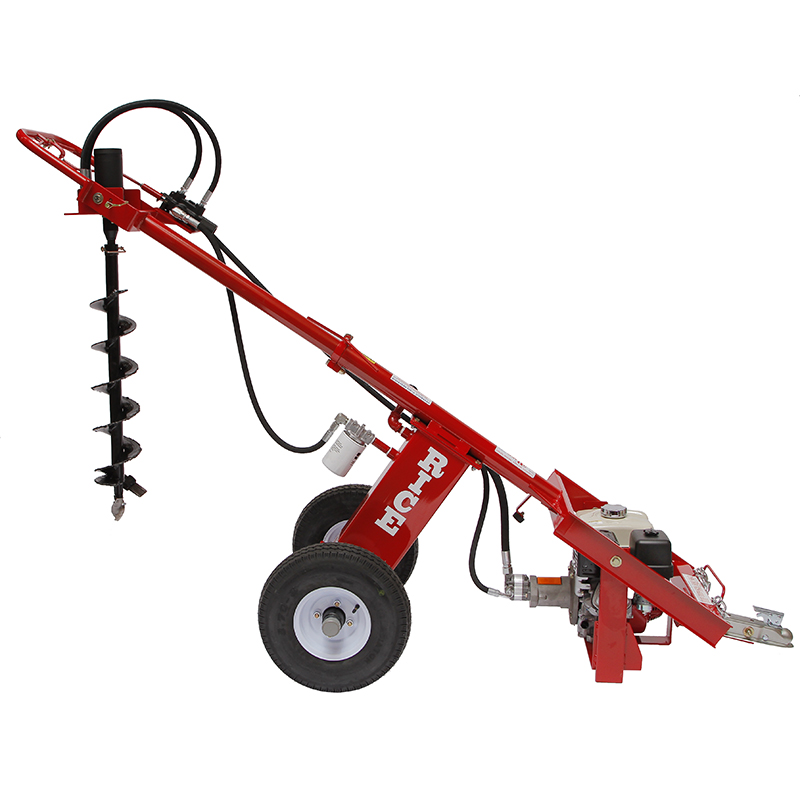
5. Installing and Operating a Hydraulic Post Hole Digger
Proper installation and operation of a hydraulic post hole digger are essential for efficient and safe digging. Following these guidelines will help ensure successful outcomes.
5.1 Preparing the Tractor and Attachment
Before attaching the hydraulic post hole digger, ensure that the tractor or equipment is in good working condition. Check the hydraulic system, tire pressure, and any other relevant components. Inspect the attachment for any signs of damage or wear and ensure all necessary brackets and connections are in place.
5.2 Attaching the Hydraulic Post Hole Digger
Follow the manufacturer’s instructions for attaching the hydraulic post hole digger to your tractor or equipment. Ensure that all bolts and fasteners are securely tightened and that the attachment is properly aligned. Use any necessary safety pins or locks to prevent accidental detachment during operation.
5.3 Adjusting Depth and Positioning
Once the digger is securely attached, adjust the digging depth and positioning according to your project requirements. Utilize the controls and levers to set the desired depth and align the auger to the correct position. Ensure that the digger is level and stable before proceeding with the digging process.
5.4 Operating the Digger Safely
Before operating the hydraulic post hole digger, familiarize yourself with the controls and safety features. Always wear appropriate personal protective equipment (PPE), such as safety glasses, gloves, and sturdy footwear. Operate the digger with caution, following safe digging practices and avoiding potential hazards or obstructions.
5.5 Maintaining and Cleaning the Equipment
Regular maintenance and cleaning are vital for prolonging the lifespan of your hydraulic post hole digger. Follow the manufacturer’s guidelines for maintenance checks, lubrication, and greasing. Remove any debris or dirt from the attachment after each use, ensuring that all moving parts are clean and free from obstruction.
6. Safety Considerations and Precautions
Safety should always be a top priority when operating a hydraulic post hole digger. Adhering to these safety considerations and precautions will help minimize the risk of accidents and injuries.
6.1 Personal Protective Equipment (PPE)
Always wear appropriate PPE when operating a hydraulic post hole digger. This includes safety glasses to protect your eyes from debris, gloves to shield your hands, and sturdy footwear to prevent foot injuries. Additionally, consider wearing ear protection due to the potential noise generated by the equipment.
6.2 Checking for Underground Utilities
Before starting any digging project, it is crucial to check for underground utilities such as gas lines, water pipes, or electrical cables. Contact your local utility companies to mark the locations of these utilities to avoid accidental damage during the digging process. Failing to check for underground utilities can result in serious safety hazards and costly repairs.
6.3 Safe Operation Practices
Operate the hydraulic post hole digger in a safe and controlled manner. Avoid sudden or jerky movements that may cause loss of control or damage to the equipment. Ensure that bystanders and other workers are at a safe distance from the digging area. Additionally, always follow the manufacturer’s guidelines and recommendations for safe digging practices.
6.4 Emergency Procedures
Be prepared for potential emergencies or accidents. Familiarize yourself with the emergency shut-off mechanisms and procedures for your hydraulic post hole digger. Maintain a first aid kit on-site and have a clear communication plan in place in case of an emergency. Regularly inspect and replace any worn or damaged safety features to ensure their effectiveness.
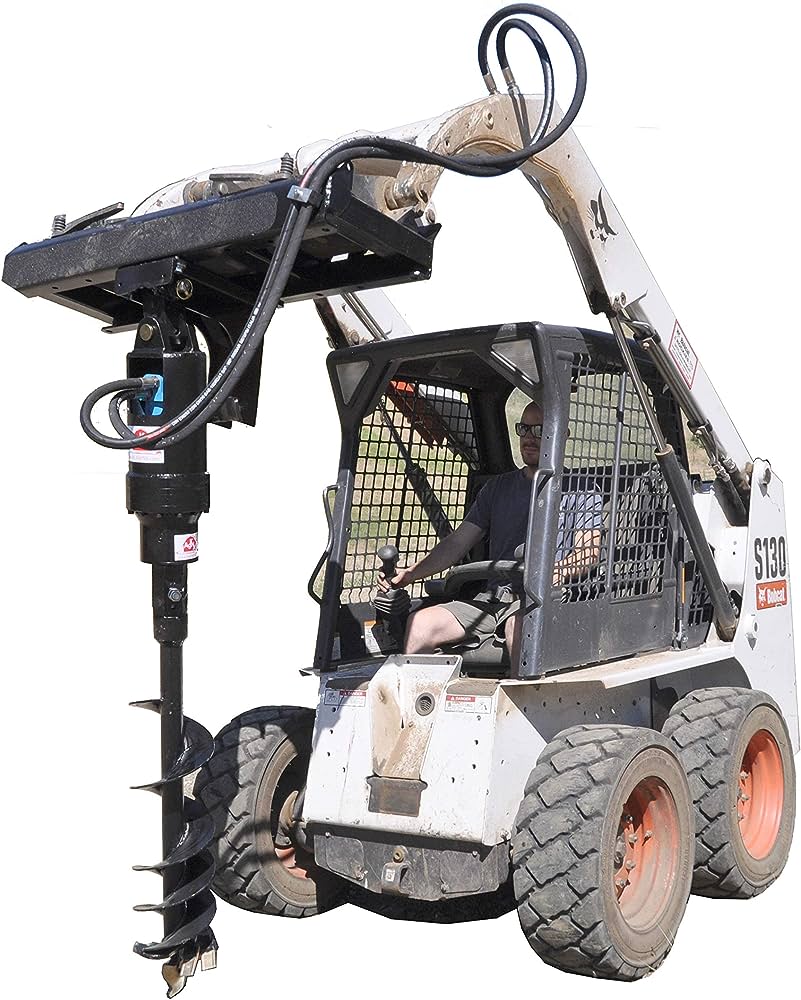
7. Troubleshooting and Maintenance Tips
Understanding common problems that may arise with your hydraulic post hole digger and implementing regular maintenance practices will help keep your equipment in optimal working condition.
7.1 Common Problems and Solutions
Some common problems you may encounter include auger jamming, hydraulic leaks, or motor malfunctions. In the event of an auger jam, carefully remove any obstructions and ensure that the auger is clear before continuing. If you detect hydraulic leaks, inspect the hoses and connections for any signs of damage or wear. Tighten loose connections or replace damaged parts as necessary. Motor malfunctions may require professional assistance, so consult the manufacturer or a qualified technician for troubleshooting and repairs.
7.2 Regular Maintenance Checks
Perform regular maintenance checks to prevent potential issues and ensure the longevity of your hydraulic post hole digger. Conduct inspections of all components, including hoses, bolts, and hydraulic systems. Look for signs of wear or damage and address any issues promptly. Regularly clean and lubricate moving parts, and replace any worn or damaged parts as needed.
7.3 Lubrication and Greasing
Proper lubrication is crucial for reducing friction and ensuring smooth operation of your hydraulic post hole digger. Follow the manufacturer’s guidelines for lubrication points and greasing intervals. Use the recommended lubricants or greases to ensure compatibility and avoid damage to the equipment.
7.4 Replacing Worn or Damaged Parts
Over time, components of your hydraulic post hole digger may become worn or damaged. It is essential to replace these parts promptly to maintain optimal performance and safety. Keep a record of the equipment’s usage and schedule regular check-ups to inspect for any signs of wear or damage. Consult the manufacturer or a qualified technician for guidance on replacing worn or damaged parts.
8. Tips for Efficient Post Hole Digging
Maximize the efficiency and effectiveness of your hydraulic post hole digger by implementing these helpful tips and techniques.
8.1 Proper Auger Selection
Selecting the right auger for your specific digging needs is vital for efficient post hole digging. Consider the type of soil and diameter requirements when choosing an auger. For denser or rocky soils, consider a more robust and durable auger design. Additionally, ensure the auger’s cutting edges are sharp and in good condition to optimize digging performance.
8.2 Techniques for Dense or Rocky Soils
If you encounter dense or rocky soils, specific techniques can help overcome these challenges. Utilize the digger’s high torque and power by gradually increasing the pressure on the auger while moving it in a circular motion. Avoid forcing the auger into the ground, as this may cause damage or equipment malfunction. If necessary, periodically reverse the rotation direction to clear any accumulated debris or rocks from the auger.
8.3 Using Water or Lubricants
In certain soil conditions, using water or lubricants can facilitate digging and improve overall performance. Water helps soften the soil, reducing resistance and ease the penetration of the auger. Lubricants, such as graphite or clay lubricants, can provide additional lubrication and reduce friction during the digging process. Consult the manufacturer’s recommendations for the appropriate use of water or lubricants with your specific hydraulic post hole digger model.
8.4 Backfilling and Compacting
After completing the hole, proper backfilling and compaction are essential for stability and structural integrity. Backfill the hole with the excavated soil or a suitable fill material while consistently compacting the soil to eliminate air gaps and ensure firm support for the post or pole. Use a tamp or compaction tool to achieve adequate compaction, and finish the surface as desired.
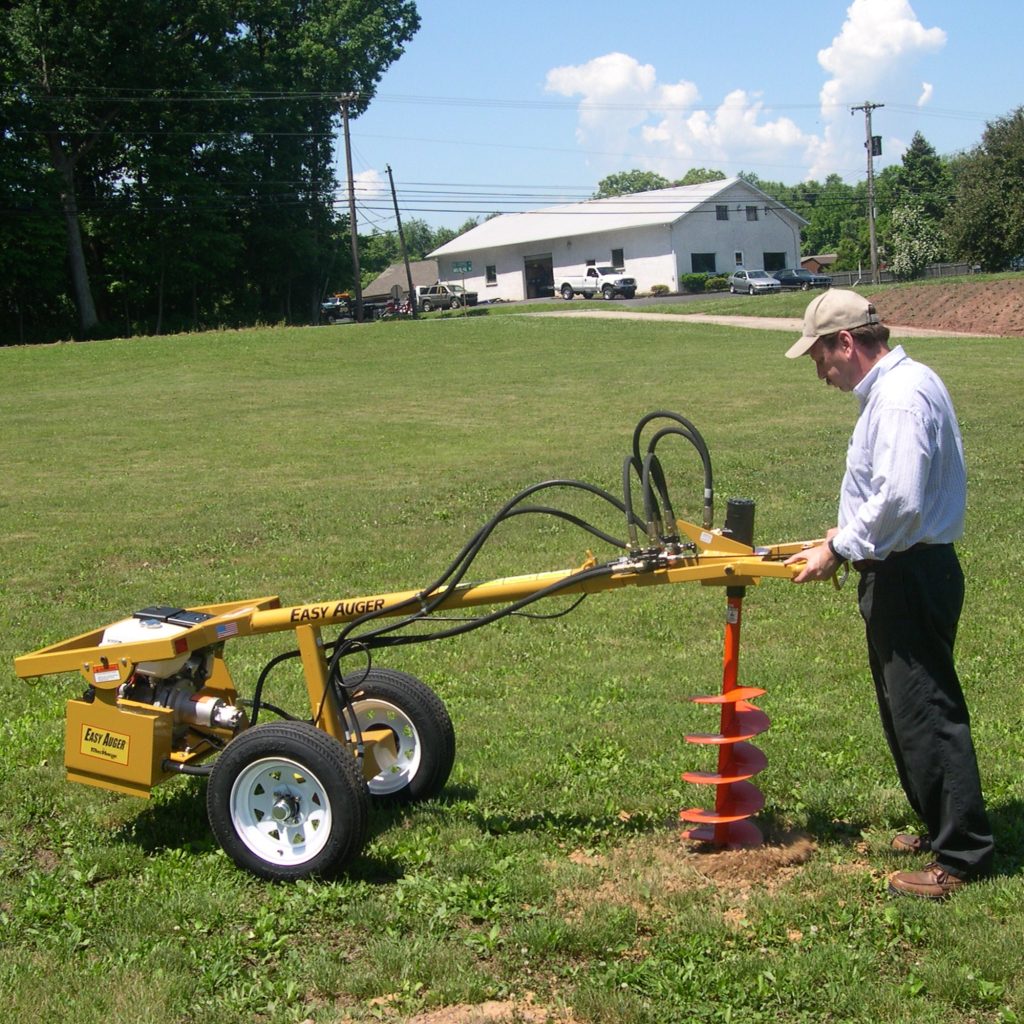
9. Frequently Asked Questions (FAQs)
To address common queries about hydraulic post hole diggers, we have compiled a list of frequently asked questions along with their corresponding answers.
9.1 How deep can a hydraulic post hole digger dig?
The digging depth of a hydraulic post hole digger depends on various factors, including the equipment’s specifications and the length of the auger. Typically, hydraulic post hole diggers can dig holes up to 5 to 6 feet deep or even deeper with specialized augers or extensions. Refer to the manufacturer’s specifications for the maximum digging depth of your specific digger model.
9.2 Can a hydraulic post hole digger be used on uneven terrain?
Yes, hydraulic post hole diggers can be used on uneven terrain. However, it is important to exercise caution and ensure that the digger is stable and properly positioned before operation. Adjust the digging depth and position accordingly to accommodate the uneven terrain, and use additional safety precautions to minimize risks.
9.3 Are hydraulic post hole diggers versatile?
Yes, hydraulic post hole diggers are versatile tools that can be used for various applications. With the ability to attach to different types of equipment, such as tractors and backhoes, hydraulic post hole diggers offer flexibility in tackling a wide range of projects, including fencing, landscaping, construction, and utility installations.
9.4 How long does it take to dig a post hole with a hydraulic digger?
The time required to dig a post hole with a hydraulic digger depends on several factors, including the size and depth of the hole, soil conditions, and operator experience. On average, a hydraulic post hole digger can dig a standard-sized hole in a matter of minutes. However, larger or deeper holes and more challenging soil conditions may require additional time.
9.5 Can a hydraulic post hole digger be used for other purposes?
While hydraulic post hole diggers are primarily designed for digging holes, their versatile nature allows for other applications. Depending on the type and design of the hydraulic post hole digger, it may be compatible with various attachments or accessories, such as earth augers, ice augers, or stump grinders. Check with the manufacturer or supplier to determine the versatility of your specific digger model.
10. Conclusion
A hydraulic post hole digger is a powerful and efficient tool that simplifies the process of digging holes for various applications. By understanding its components, types, selection criteria, operation, and maintenance, you can make informed decisions when purchasing and using a hydraulic post hole digger. By following the safety guidelines, troubleshooting tips, and employing efficient digging techniques, you can enhance your productivity and achieve excellent results in your outdoor projects. Remember to always prioritize safety and consult the manufacturer or a qualified technician when necessary. With proper care and maintenance, a hydraulic post hole digger can be a reliable and indispensable tool in your toolbox.
